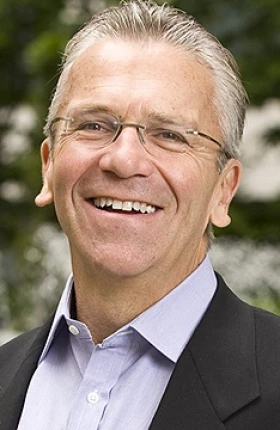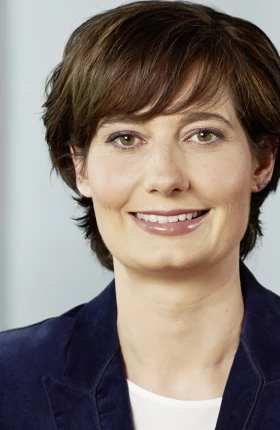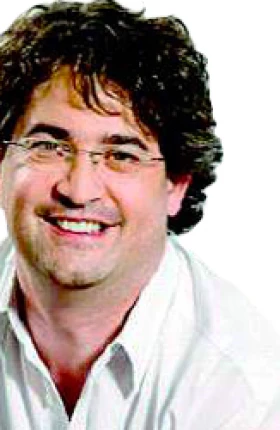It’s difficult to argue with Sean Maurer when he says he has “the sweetest job in the world.” After all, he gets paid to spend his days surrounded by and thinking about chocolate.
Sean (BCG Atlanta, 2004-2005) is marketing director for Scharffen Berger and Dagoba premium chocolate brands, which are wholly owned by The Hershey Company and housed under its Artisan Franchise.
Those familiar with the Hershey name will likely associate it with mass-market favorites such as Hershey Milk Chocolate Bars, Reese’s Peanut Butter Cups, and Ice Breakers mints and gum. But premium chocolate?
“I’ll make a BCG reference immediately and point to Michael Silverstein’s work in his book Trading Up that shows a bifurcation of markets. Organic premium chocolate is a luxury item that is seeing dramatic growth as consumers trade up for indulgence and superior quality,” Sean said.
With Scharffen Berger and Dagoba as part of its portfolio, he explains, Hershey is now positioned to compete with established premium brands.
Scharffen Berger, acquired by Hershey in 2005, had been an independent chocolate maker, originally based in Berkeley, California, and founded in 1996 by John Scharffenberger. It was the first U.S. company founded in the last half century to make chocolate from “bean to bar,” as opposed to other chocolatiers making products with chocolate bought from wholesale manufacturers. It was also the first to list cacao content—usually quite high—on its bars. It uses small-batch processing and focuses on varieties of dark chocolate.
“People buy Scharffen Berger because it’s a premium, gourmet product that uses the best beans in the world and because its simple, attractive, and elegant packaging makes it great for gifting,” Sean said.
Dagoba Organic Chocolate, acquired in 2006, makes high-end chocolate bars, cocoa powder, drinking chocolate, and baking chocolate, blending fun ingredients such as lavender-blueberry, lemon-ginger, and raspberry-rosehip. It is popular among what Sean describes as outdoorsy types that choose to shop at organic grocery stores and are adventurous about trying new flavor combinations.
“I’ve heard people say ‘I’m sorry to see these brands get bought by Hershey’s.’ Well, don’t be sorry; too many small chocolate producers go out of business because they fail to get past their first level of scale," Sean noted. "As John Scharffenberger has pointed out, there was a year when he couldn’t make a particular bar because he lacked the proper cocoa beans, and being part of Hershey’s now allows consistent access to the highest quality beans.”
Little has changed about the way Scharffen Berger is made: a master chocolatier still uses artisan European equipment to craft the product; it is still made one batch at a time; it is ground, conched, and tempered as it has always been; and it looks, feels, and tastes as it always has.
Sean describes himself as being a “mini-general manager,” overseeing the creation, testing, and marketing of new Artisan Franchise products. “Testing,” he explains, demands that he taste all new products to figure out how best to produce and market them. He assures us he approaches this part of the job with dogged determination.
His primary responsibility, he says, is marketing: packaging, product development, pricing, and promotion—radio, print, billboards, Internet videos, and such—whatever it takes to make people aware of the products.
Nonetheless, while a name like Scharffen Berger implies a product imbued with qualities of German chocolate-making tradition, Sean concedes that people as yet unfamiliar with it simply might not know how to spell or pronounce it. As such, it might be difficult to search for online or to ask for in a store. He’s confident, however, that over time people will become familiar with both the look and the sound of the name.
“Ten years from now," he said, "we want to have Scharffen Berger and Dagoba on the tips of people’s tongues—figuratively and literally—in much the same way as consumers today have become familiar with names like Ferrero Rocher, Lindt, and Ghirardelli.”
He compares consumers’ new-found fascination with high-end chocolate to the rise of other premium products, such as gourmet foods, coffee, or micro-brewed beer. “In much the same way as BCG alumnus, Jim Koch sparked a revolution in craft brewing in the U.S., John Scharffenberger inspired a new era in chocolate making,” Sean said.
Most major cities in the U.S. now have at least one top-class, independent chocolatier.
“One of our biggest challenges is that, since our old points of difference have been widely imitated, we are no longer unique," Sean said. "It’s now much easier and less expensive to obtain and process top-quality beans, and there’s been an explosion of choice—fair trade, organic, un-ground, un-roasted, you name it. We want to stay relevant in the face of so much competition, and we’re doing that by adding some unique new bar flavors and by expanding our gifting portfolio.”
It’s at this point where his BCG experience comes in very useful.
“I was fortunate at BCG to get staffed on several consumer growth strategy projects," Sean said. "I really enjoyed getting inside the head of the consumer to figure out how a client might align its resources to achieve the ‘white space,’ within its consumers’ needs.”
To date, Sean has had three jobs at Hershey, each of which, he says, has utilized the strategy skills he picked up at BCG.
“BCG is where I learned that there are three critical parts to any job—calculate, communicate, and convince," he said. "Even if I’ve found the right answer and put it across in a succinct and understandable way, the project is far from finished. People need to be convinced, and different people are convinced in different ways: some by numbers, some by stories, and some by emotions. For others still, all of these together might not be enough; they need to hear it from the right messenger, and that messenger might not necessarily be me.
“Knowing how to align people around the right answer is something BCG prepares you for very well—the ability to convince is nurtured in the team room when you’re working to sway project leaders and managers.”
Since leaving BCG, Sean has enjoyed a career path that has allowed him to be what he describes as “an entrepreneur within a large company,” and to pursue a passion that’s about so much more than just chocolate. “For me," he said, "the real excitement is about seeing the transformation of an industry up-close, and to be on the frontlines of the creation and marketing of fantastic products.”
And among these “fantastic products,” does he have any favorites?
“We have a double-tempered, thicker dark chocolate bar with sea salt sprinkled on top," Sean noted. "However, that’s only available online or from our California stores—or from the bowl in front of me on my desk.”





